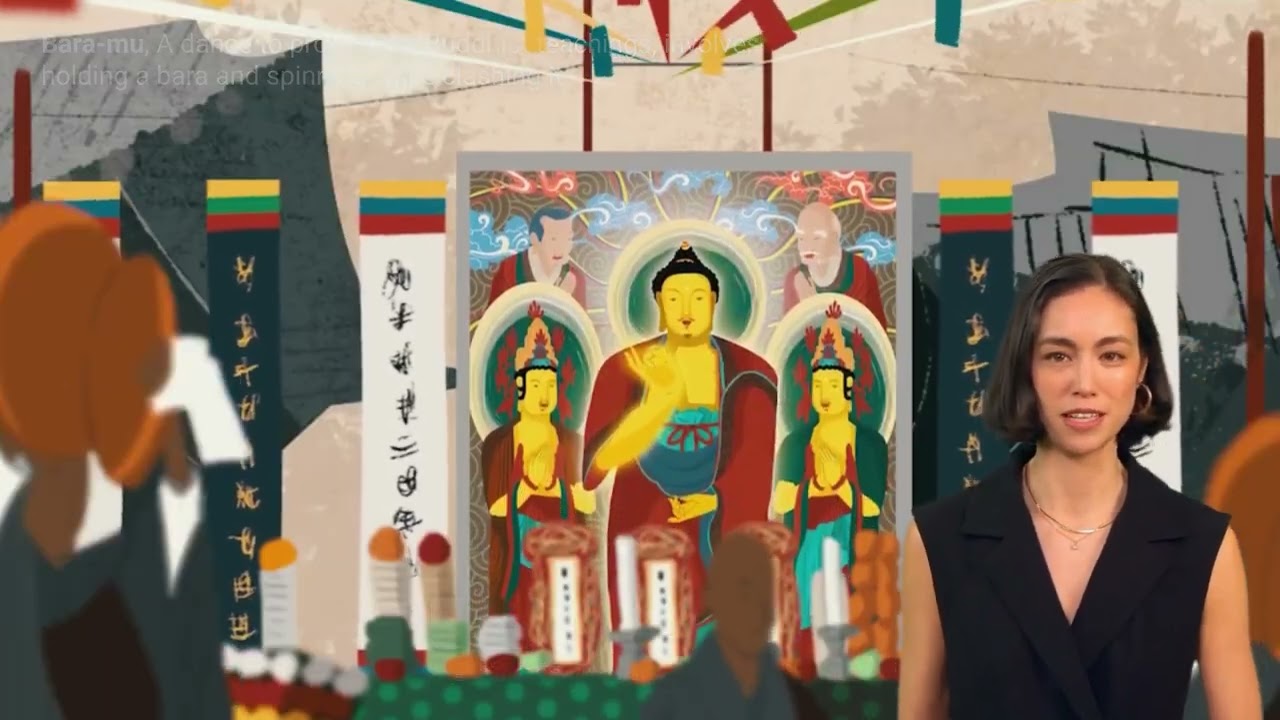
Gamro, it's raining the Dharma Rain.
Sweet Dew Picture and Hungry Ghosts.
Hungry ghosts are spirits who have fallen into the realm of hungry ghosts due to greed and foolishness.
They have narrow throats, making it impossible for them to eat, and thus they constantly suffer from hunger.
Kwan-York refers to a ritual of washing away mental afflictions and putting on new clothes.
After completing a bath in the 'Kwan-York-So' bathhouse, the spiritual beings then proceed to offer a deep bow towards the Buddha in the main hall.
Sin-Jung-Jark-Bub refers to a ritual in which visiting
Buddhists are invited to purify the temple grounds.
Baramu is a dance to protect the Buddhist teachings,
characterized by holding a bara and spinning while clashing it.
Gwaebul-eun is an important ceremony where a large Buddhist painting symbolizing the Buddha's assembly at Vulture Peak is moved from inside the main hall to be hung on the stand.
After the completion of the Gwaebul-eun, the assembly at Vulture Peak where Buddha preached is reenacted. The monks of Eosanbeompe perform grand and beautiful celestial music and dance, unfolding in joyous celebration.
Dances are performed holding the temple drum and paper streamers, leading to the world of Dharma fervor.
Su-Ryuk-Yeon-Ki is a ritual that narrates the origin story of Su-Ryuk-jae.
Su-Ryuk-jae is the grandest Buddhist ceremony where all Buddhas, Bodhisattvas, solitary spirits, and even
lifeless beings are invited to the temple to solemnly perform rituals of Dharma.
This ceremony originated from the 'Yeon-Gi' tale involving the Buddha Sakyamuni, Ananda, and the Hungry Ghost King Myeon-yeon.
So-Cheong is a ritual of inviting Buddhas and Bodhisattvas to a feast table, conducted in three stages.
Gwon-Gong and Si-Sik is a ritual of offering food to all beings, and it is also conducted on three stages.
Bong-Song-Hoe-Hyan is a ritual that involves bidding farewell to the participants and burning the used paper streamers.
After all the rituals are concluded, everyone joyfully dances together to celebrate their successful and complete.
National Intangible Cultural Heritage No.126, 'Jinkwansa' Temple's Royal Su-Ryuk-Jae', is a royal water and land ritual representing the Chosun Dynasty era and has been continuing for 600 years alongside the history of Seoul.
Thank you.